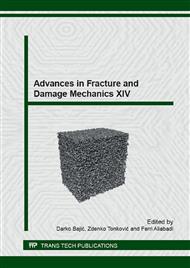p.45
p.49
p.53
p.57
p.61
p.65
p.69
p.73
p.77
Preparation and Characterization of Halloysite Nanocomposites by Rapid Prototyping Technology
Abstract:
Rapid prototyping (RP) is a new technology to fabricate a prototype part layer-by-layer. This technique has been achieved in many industrial sectors, but parts fabricated using this technique exhibit low mechanical properties, this makes it difficult to apply to fast growing applications. This technology can not only effectively save production time and cost of the prototypes, but also produce complicated product. In this study, we investigate the effect of the addition of halloysite nanotubes on mechanical properties of nanocomposites made by the RP process. Test specimens were fabricated using tetrafunctional polyester acrylate (TPA) and 1, 6 hexanediol diacrylate (HDDA) photopolymer as a matrix material and halloysite nanotubes as a reinforcing material. The adhesion between TPA/HDDA and halloysite nanotubes has been improved by using surface modification of a silane coupling agent. When compared with neat photopolymer, the tensile strength of nanocomposites decreased by about 22%, because the halloysites had poor interfacial adhesion. Silane treatment of halloysites using 3-aminopropyl triethoxysilane was succeeded to improve tensile strength of nanocomposites (2 phr halloysite nanotubes) by 31%.
Info:
Periodical:
Pages:
61-64
Citation:
Online since:
September 2015
Keywords:
Price:
Сopyright:
© 2016 Trans Tech Publications Ltd. All Rights Reserved
Share:
Citation:


